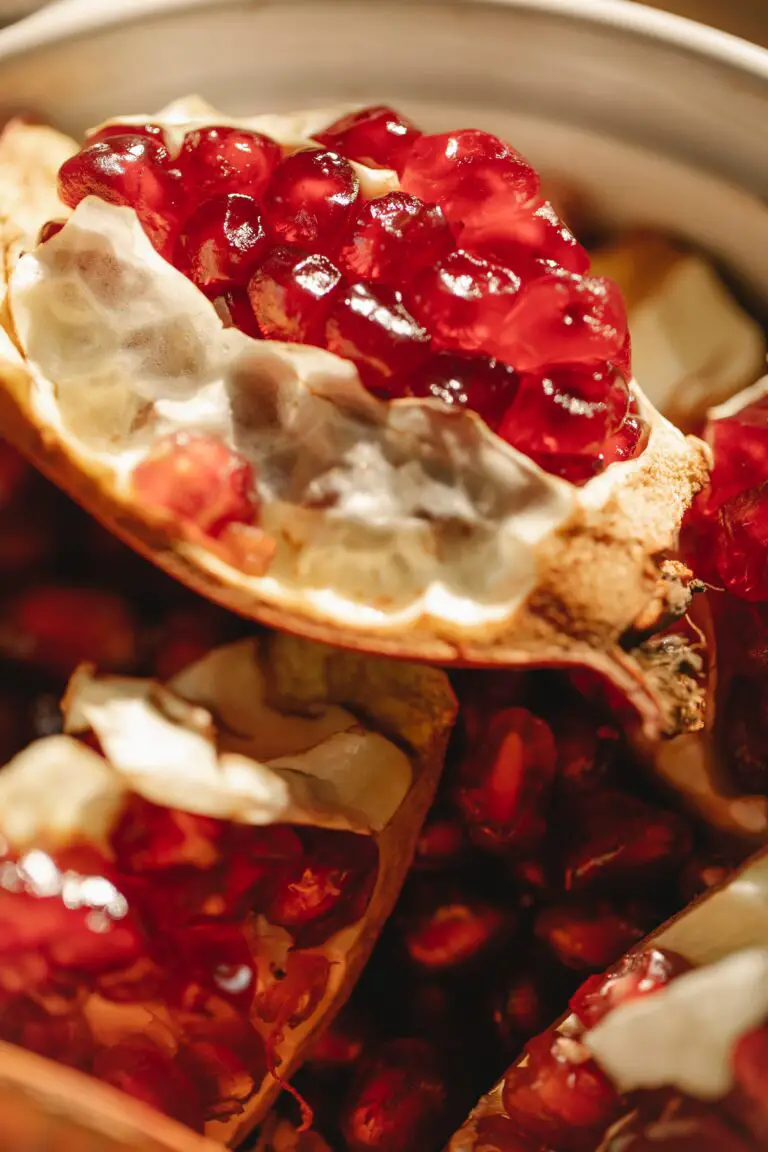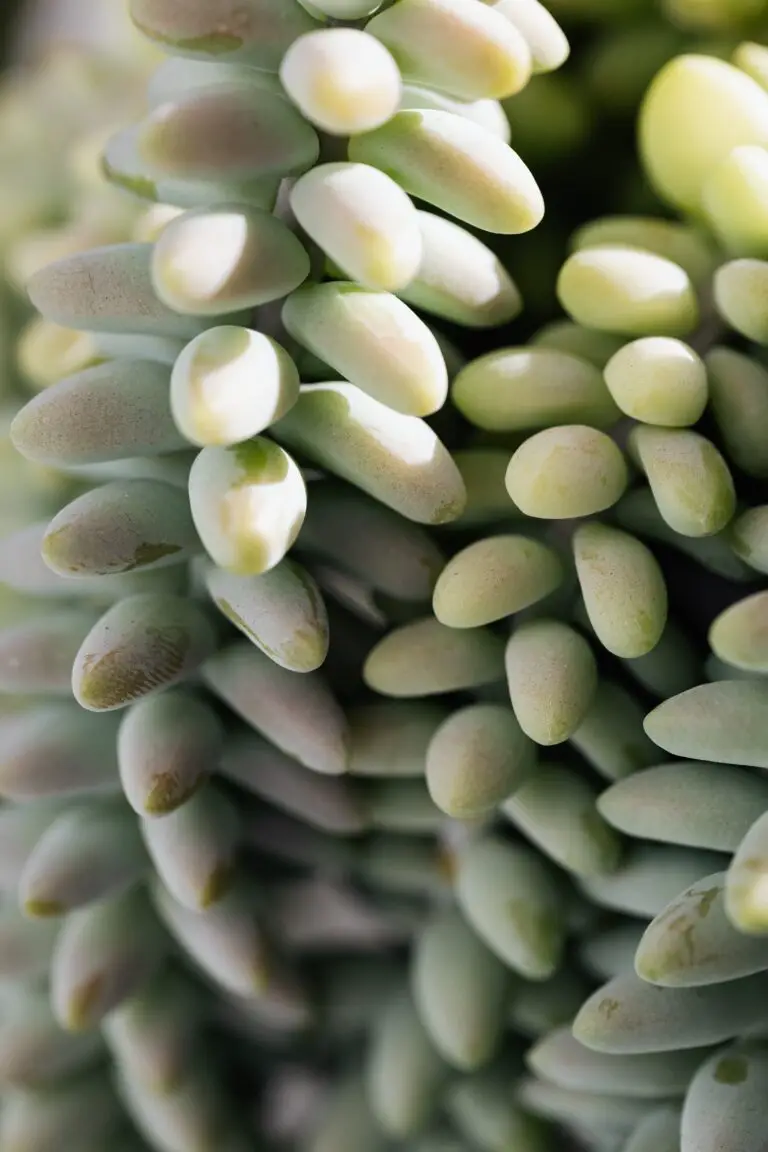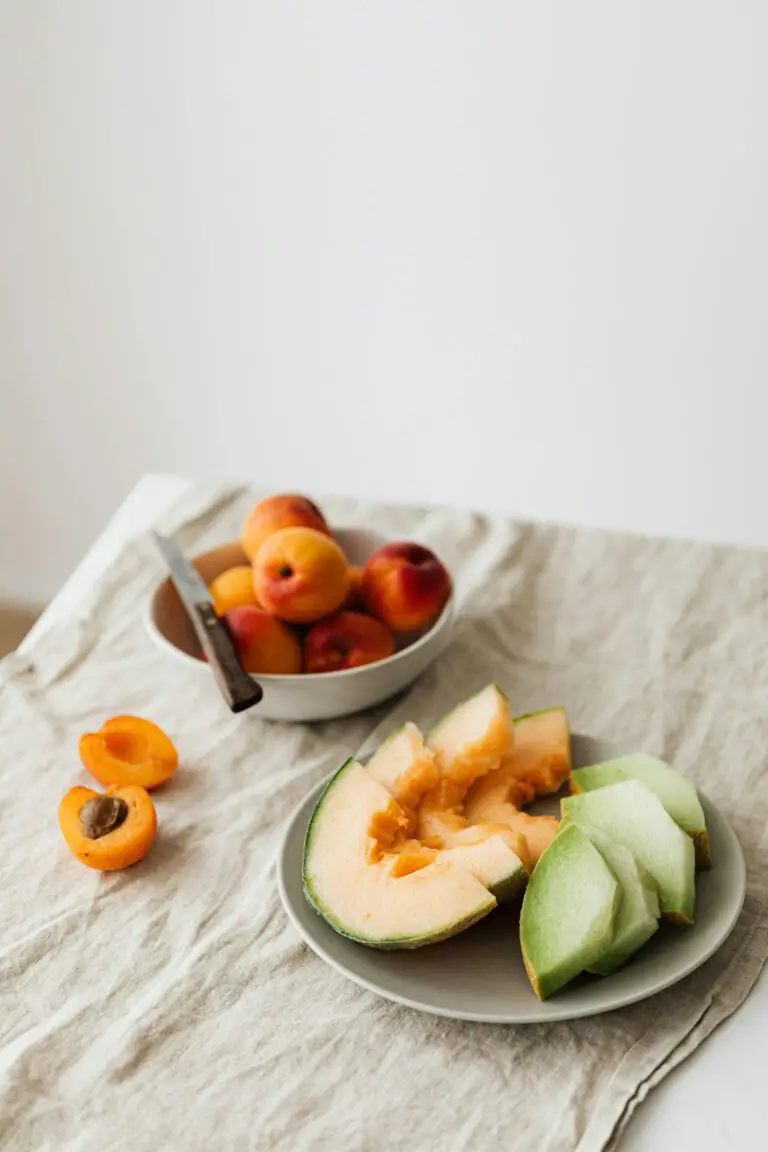Introduction to Sedums and Their Diversity
Welcome to the enchanting realm of sedums, or stonecrops, as they are fondly referred to due to their stubborn resilience that allows them to flourish in rocky landscapes. These hardy succulents boast an impressive lineage, with species ranging from the petite Sedum acre, which nestled cozily in the cracks of alpine cliffs, to the robust Sedum telephium, stretching tall in the sun-dappled meadows of the Midwest.

This botanical tapestry is not just a feast for the eyes but also a cornucopia of potential culinary delights. It piques our curiosity: Can these diverse beauties transition from ornamental marvels to flavorful additions to our plates? Questions of their edibility swirl like an aromatic breeze through the gardens where they dwell.
Peek into hamlets where traditional wisdom guides the forager’s hand to certain species of sedums, coveted for their peppery, lemon-like zest that has graced many rustic salads and traditional dishes. It’s this very intrigue that beckons us to explore the plurality of sedums in our gardens and challenges us to uncover the full spectrum of their culinary potential.
So, let us embark on a gastronomic voyage, from the rock gardens and craggy outcrops to the kitchen, as we untangle the myths and facts surrounding the edibility of sedums. Might we find a verdant treasure amongst these succulents, ready to elevate our culinary creations to new heights? Stay tuned as we explore the flavors that these versatile succulents may yield to the adventurous palate.
What Are Sedums?
Step into the world of sedums, commonly known as stonecrops, and you’ll find yourself surrounded by a succulent paradise where versatility meets low-maintenance charm. With fleshy leaves and a kaleidoscope of colors that paint a vibrant canvas across gardens, sedums have cemented their popularity among green thumbs and succulent enthusiasts alike. To understand the full extent of their allure, imagine a succulent that thrives with minimal fuss, endures drought like a champ, and offers an endless variety of shapes and sizes.
Sedums are the go-to plants for those seeking an eye-catching groundcover or a textured addition to rock gardens and borders. Picture this: a lush blanket of sedum spreading across your garden bed, offering a feast for the eyes with their star-shaped blooms and attracting a bustling community of pollinators. But their application isn’t just limited to garden aesthetics. Envision a green roof topped with sedums, enhancing urban sustainability while creating a lively habitat for city-dwelling wildlife.
Why are they such a favorite? It’s simple – they’re hardly finicky about soil and can bask in the full glory of the sun, asking only for a well-drained spot to call home. Their resilient nature makes them a symbol of endurance in the plant kingdom, capable of withstanding neglect that would see many other plants wither. Discover more about the diverse world of sedums and their care.
Now, let’s shift gears from the picturesque to the practical. For those aspiring to greenify their living spaces, sedums are a match made in heaven for both indoor pots and outdoor landscapes. For a hands-on guide to embracing these plucky plants, check out this insightful resource on nurturing sedums, designed to transform even the most novice gardener into a seasoned succulent whisperer.
${}
As we peel back the layers of their culinary potential, one cannot help but wonder – are sedums edible? The answer lies ahead, as we delve deep into the delectable attributes of these savory succulents. But be warned, not all sedums are created equal when it comes to taste. So, before you consider spicing up your dish with a pinch of sedum, ensure you’re picking the right species!
“`html
Are Sedums Edible? The Answer Revealed
Have you ever looked at a sedum, those succulent beauties basking in the sun, and wondered if they’re more than just eye candy? Well, it turns out, some of these hardy plants are not just a treat for the eyes but potentially for the taste buds too! Let’s dig into the world of sedums and uncover which ones can join your salad bowl and which ones are better left alone.
First things first, let’s talk about the sedums that you can actually eat. There are several species of sedum that are not only edible but downright delightful. Imagine this: you’re strolling through your garden and you pluck a young, tender leaf off a Sedum ternatum—also known as woodland stonecrop—and pop it into your mouth. Expert studies suggest that when very young and tender, these leaves can be eaten raw. Fresh and peppery, they add a zesty kick to your meals much like arugula does. Incorporating these into a fresh summer salad could be just the twist you need for a culinary masterstroke!
But caution! Not all sedums are created equal in the edibility department. While some can play a starring role in your dishes, others might lead to an unpleasant culinary experience. For some species, their bitter taste might be more akin to a palate challenge than a flavor enhancer. And let’s not forget about those that come with potential digestive irritations if consumed in larger quantities—that’s a dinner party disaster waiting to happen!
So, what’s the secret to knowing which sedums to eat and which to greet with only your eyes? The answer lies with our green-thumbed experts and botanists, who have delved into the culinary potential of these stonecrops, providing us with invaluable insights. They’ll tell you that while you may not find sedums at the local grocery store next to the kale and spinach, with the right knowledge, they could very well find a place in your herb garden—and your next gastronomic adventure.

Imagine garnishing a dish with sedum leaves that have just a hint of a kick, or using their blossoms to add a dash of color and slight peppery hint to a dish. The possibilities for culinary innovation are as vast as the varieties of sedums themselves. But, as with any foraging foray, it’s crucial to approach with knowledge, care, and a keen sense of adventure.
To make the most out of edible sedums, it’s all about timing and preparation. Harvesting them while they’re young and before they flower ensures the best taste and avoids any toughness in the leaves. And remember, moderation is key. Overindulging in these succulent morsels could lead to more time in the bathroom than at the dining table.
“`
Nutritional Profile of Edible Sedums
Edible sedums, often known as stonecrops, are not just a visual delight in gardens but also a hidden gem in the culinary world. These succulent plants, with their plump, juicy leaves, are more than just a pretty face; they pack a nutritious punch that might make you consider adding a sprig or two to your next salad.
Imagine taking a bite out of a crunchy sedum leaf, a burst of fresh flavor surprising your palate – this is the delight edible sedums can bring to your table. An interesting fact is that sedums contain a diverse range of vitamins and minerals. They are particularly rich in vitamin C, which is essential for a healthy immune system, and they also offer a dose of dietary fiber to aid digestion.
Are you curious about the specific nutritional benefits of sedums? Check out this video that discusses succulent care and nutritional information. It’s a great resource for budding garden chefs looking to elevate their nutritional knowledge!
Moreover, sedums offer a low-calorie option for those mindful of their intake. The exact nutritional content can vary among different species, but in general, sedums have been noted for their modest amounts of calcium and phosphorus, which are vital for bone health. Trace elements like zinc, known for supporting the immune system and skin health, are also present in these verdant beauties.
Perhaps one of the most intriguing aspects of sedums’ nutritional profile is its rich array of phytochemicals. These compounds not only contribute to sedums’ distinctive taste but also their potential antioxidant properties. Antioxidants are crucial for neutralizing harmful free radicals, helping to maintain overall health and potentially ward off chronic diseases.
For a deeper dive into the nutritional idiosyncrasies of this succulent, a visit to this comprehensive guide on how to grow and care for sedum could prove enlightening. It offers insights that go beyond the usual gardening tips, touching upon the nourishing aspects sedums add to your life.
Now, let’s bring this out of the realm of the hypothetical and into your kitchen. Imagine tossing those nutrient-dense leaves into a spicy stir-fry or garnishing a zesty taco. The possibilities are endless, and with the health benefits they bring, edible sedums just might become your new go-to ingredient for a revitalizing, healthful twist on your favorite dishes.
Culinary Uses of Sedums
When it comes to spicing up our meals, we’re always on the lookout for new and exciting ingredients. Enter sedums, those versatile succulents that you might be more accustomed to seeing in rock gardens than on your dinner plate. But hold onto your forks, because these plucky plants are not just a feast for the eyes—they’re edible too! Known commonly as ‘stonecrops,’ sedums are making their way into kitchens of the adventurous foodies and experimental chefs. So, are sedums edible? Absolutely, and here’s how you can serve up these succulents in style.
Nature’s own ornamentals, sedums come in a variety of shapes and flavors, each offering a unique twist to traditional dishes. Imagine a refreshing salad, but with a twist: peppery sedum leaves that provide a crispy, juicy bite. Or consider a summer cocktail garnished with delicate sedum flowers that tantalize your taste buds with their lemony zest.
Nowadays, the culinary world is abuzz with new ways to incorporate these plants into everyday eating. One home cook found fame in her neighborhood with her ‘Sedum Caprese’—a classic Caprese salad where sedums take center stage alongside ripe tomatoes and mozzarella, drizzled with a reduction of balsamic and sedum-infused olive oil. An added bonus? The vibrant colors of sedum leaves add a pop of visual appeal that’s sure to impress any dinner guest. But the magic of sedums doesn’t stop at salads.
Get ready for the pièce de résistance: succulent grilled fish topped with a sedum and citrus salsa. It’s a dish that offers a symphony of flavors, each bite harmonizing the freshness of the sea with the tanginess of the sedum-citrus combination. Chefs who have dabbled in the art of sedum cuisine agree that their lemony flavor pairs exceptionally well with seafood, elevating the dish to an unexpectedly sumptuous level.
And for the dessert aficionados? Pastry chefs are finding creative ways to incorporate these edible delights into sweet treats. Picture a sedum-infused panna cotta, where the subtle hints of sedum enhance the creamy texture with an aromatic zest. It’s a conversation-starter dessert that could very well be the new talk of the town at patisseries and fine dining establishments alike.
As you can see, sedums are more than just garden beauties; they’re a culinary chameleon ready to transform any meal into a gastronomic adventure. Before you rush to your nearest garden center, remember to use only organically grown sedums that haven’t been treated with pesticides or other harmful chemicals, and always consult an expert to ensure they are safe for consumption. Happy cooking, and who knows? Perhaps your next culinary masterpiece will feature the understated yet captivating sedum!

How to Safely Harvest and Prepare Sedums
If you’ve ever gazed upon the fleshy, vibrant leaves of sedum plants, you may have wondered, “Can I eat this?” The answer is yes, but with a cave for cautious consumption—only if you can confidently identify the edible varieties. With stonecrops dotting gardens and wild landscapes, we have a surprisingly underutilized resource at our fingertips. Let’s delve into the art of selecting the right sedum for your salad bowl and how to transform these succulents into delectable dishes.
Scouting for Edible Sedums
Before you even think about making room on your plate, proper species identification is paramount. While many sedums are indeed edible, mistaking a non-edible variety could put a damper on your foraging foray. So, how do you tell them apart? Look for sedums with plump, juicy leaves that are commonly known to be palatable, such as Sedum reflexum, also known as “crooked yellow stonecrop,” or Sedum telephium, the “orpine.” These varieties boast leaves with a peppery, slightly lemony zing that can invigorate any dish.
Imagine you’re on a leisurely hike, and you come across a patch of these succulents basking in the sun. You’ll want to observe their growing conditions—sedums with edible credentials prefer well-drained soil and ample sunlight. They often grace rock gardens, walls, and roof greeneries, revealing their penchant for spots that other edibles might snub. These hardy plants laugh in the face of drought, which is why their leaves are so succulently stocked with hydration.

The Harvest: When and How
When the sun is high, and the sedums stand at attention, that’s your cue. The best time to harvest is on a sunny day, post-dew evaporation but before the sun begins to beat down too fiercely. Snip the tender leaves and stems, preferably the young growth for it’s tender and succulent, leaving the sturdier stalks behind. This method encourages the plant to bounce back, much like pinching back herbs to promote new growth. It’s a sustainable loop where both you and the plant thrive.
Partner your harvest with the care of an orchardist picking apples with utmost gentleness—you’re curating a crop of jewels from nature’s own boutique. A small basket or container to transport your find is recommended, avoiding any compressions that could bruise your precious greens.
Rinsing and Prepping for the Plate
Once home, treat your sedum sprigs as you would a bouquet of fresh lettuce. A gentle but thorough rinse under cool water will dislodge any unwelcome guests—tiny insects or specks of soil. Spin or pat them dry, as moisture is not the friend of crispness when it comes to salad greens. Now, with your sedums spick and span, they’re ready for culinary action.
Dice, chop, or tear the leaves into bite-sized pieces, blending them with other greens or letting them shine as the main event in a garden-fresh salad. You can even get creative and integrate them into an array of dishes, from zesty pesto to a vibrant topping for bruschetta. The key is in pairing them with flavors that complement their peppery kick—think of them as the understudy to arugula, ready to take center stage in your next green masterpiece.
Potential Health Benefits and Risks
When it comes to the question, “Are sedums edible?” the intrigue around these succulent treats extends beyond their charming appearance. Let’s dive into the nourishing benefits and heedful risks that come with incorporating sedums into our diet.
Sedums, often referred to as stonecrops, are not just a feast for the eyes in rock gardens and terraces. Some species of these robust plants pack a punch of flavor and are traditionally nibbled on in various cultures. But what’s more intriguing are the potential health benefits they carry. Notably, some sedums are known to contain high levels of vitamin C and fiber. Imagine a scenario where you’re hiking through the great outdoors, and there you find a patch of these fleshy green morsels – a natural, refreshing snack that could boost your energy with their vitamin-rich content!
However, it’s not all sunshine and succulents – certain species of sedum contain compounds that might not sit well with everyone. It’s a balancing act; on one side, the beneficial antioxidants that fight free radicals like gallant knights, while on the other, there’s a risk of digestive discomfort for those with sensitive stomachs. It’s like inviting a wild card to your garden party – exciting but unpredictable.
While there’s a lack of extensive scientific research on the culinary uses of sedums, there are murmurs in the scientific corridors. Preliminary studies hint at anti-inflammatory and analgesic properties that could potentially soothe ailments and pains. It’s as if Mother Nature has tucked away a little green pharmacy among the rocks.
Now, before you go foraging in your neighbor’s rockery, take heed. Having a chat with a botanist or an expert in edible plants might save you some trouble, as not all sedums are created equal. For instance, Sedum acre is a no-go due to its pungent, slightly toxic nature. It’s the untamed cousin that might spike the punch at your aforementioned garden party.
To sum up, while sedums hold promise as an addition to your culinary arsenal, it’s paramount to tread carefully. There’s a visage of health benefits, yes, but also a shadow of risks. After all, is there anything more gallant than taking the road less traveled with wisdom as your trusty steed? Unearthing the secrets of sedums is one such adventure.

In conclusion, while sedums are not your everyday salad ingredient, they beckon the curious and the adventurous. With potential health benefits such as a boost in vitamin C and fiber alongside possible anti-inflammatory properties, they may just merit a spot in the modern pantry. Nonetheless, caution and knowledge are essential to ensure a safe and pleasant experience when adding a sprig of stonecrop to your plate.
Incorporating Sedums into Your Diet
Now that we’re clued into the edible wonders that are sedums, let’s chat about how you can grow these stonecrop surprises and bring a burst of nutrition and flavor to your table. Sedums, with their juicy leaves and peppery taste, can make for a delightful addition to a variety of dishes. But before we dive into the culinary creations, it’s important to consider how to grow these succulent morsels in your own garden.
Starting off, edible sedums are incredibly forgiving plants, making them fantastic for both green-thumbed gurus and gardening newbies. They don’t demand much: good drainage and plenty of sunlight will do the trick. So pick a sunny spot, be it a garden bed or a windowsill pot, and plant some sedum cuttings. With these low-maintenance buddies, you’ll have a steady supply of fresh leaves to harvest for your kitchen experiments.
Picture this: It’s a lazy Sunday afternoon, and you’re about to whip up a zesty quinoa salad. Why not snip off a handful of sedum leaves to add a crunch and a nutritional kick? These leaves offer a cocktail of vitamins and minerals, but remember, balance is key. Mix them with a cornucopia of other veggies for a plate that’s as nutritious as it is colorful.

Now, whether you’re a gourmet chef or a sandwich enthusiast, sedums can offer that extra oomph. Imagine transforming your ordinary ham and cheese sandwich into an extraordinary treat with a few sedum leaves. Their hint of lemony zest pairs well with savory flavors, creating a symphony in your mouth with each bite. Plus, you’ll be munching on something that’s just as good for your body as it is for your taste buds.
And why stop at savory? Let’s make life a little sweeter. Blend sedum leaves into a verdant smoothie with a mix of fruits like bananas and berries for a revitalizing drink that’ll have you bouncing through your day. The vibrant green of the sedums not only makes for an Instagram-worthy glassful but also infuses your beverage with wholesome goodness.
However, as we joyfully embrace sedums into our diets, it’s crucial to maintain dietary diversity. They are a complement—not a complete meal. Ensure you rotate them with other greens and ingredients. After all, sedums are just one part of the wide spectrum of foods that contribute to a harmonious diet. So go ahead, explore and enjoy the edible landscape that sedums can offer!
Frequently Asked Questions
Wondering if those sedums in your backyard can make their way into your salad bowl? Before you start plucking these succulent leaves, let’s dive into some common questions surrounding the culinary uses of sedums, or as they’re delightfully known, stonecrops.
Can You Really Eat Sedums?
Yes, you certainly can! Sedums, a group of succulent plants, have parts that are edible. Imagine adding a slightly peppery, fresh crunch to your dishes. But hold your garden scissors for a moment – while many are non-toxic, not all sedums are created equal. It’s vital to identify the right varieties, as some can be bitter or potentially harmful if ingested in large quantities.

Are Sedums Safe to Eat?
Mostly, yes! For the green thumbs out there, varieties like Sedum reflexum and Sedum lanceolatum are applauded for their eatability. However, always double-check with a local gardening expert or a trustworthy plant identification guide. Safety first, culinary adventure second!
What’s the Best Way to Prepare Sedums?
Less is more when it comes to sedums. Raw in salads, they offer a refreshing zest. Others prefer a quick blanch to soften the leaves for a milder flavor. You know your Aunt Marge’s famous lemon and herb dressing? It’s the perfect match for a sedum salad! And if cooking is your thing, try tossing them into a stir-fry for the last minute – they’ll add a delightful bite.
Do Sedums Fit into Special Diets?
Absolutely! Keto aficionados, paleo practitioners, and gluten-free gurus can all jump on the sedum bandwagon. Low in carbs and gluten-free, these succulent morsels are a dream for anyone looking to spice up their dietary alternatives with a touch of garden freshness.
Remember, while exploring the edible world of sedums can be a delightful journey, it’s crucial to proceed with knowledge and caution. Now, who’s ready to garnish their next meal with a sprinkle of stonecrops?



